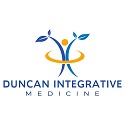Instilling healthy habits in our youth is important but getting them to listen and actually create those habits can be difficult…if not impossible. The best way to reach youth is with other youth, and that’s why the American Heart Association has created in-school programs with Youth Heart Ambassadors that act as role models and lead by example in the fight against heart disease. Three Thurston County youth – Blake Camus, Aescher Oberoi, and Avery Hultz – were named Youth Heart Ambassadors for the 2024-25 school year.
“These inspiring young people all have personal experience with heart disease and join six other students as they begin a year-long volunteer position and work closely with the American Heart Association’s in-school programs, Kids Heart Challenge and American Heart Challenge to raise awareness of heart disease and stroke in young people along with inspiring peers to adopt healthier habits for improved mental and physical well-being,” shares Valerie Koch, American Heart Association region senior marketing communications director.
Meet Thurston County’s Youth Heart Ambassadors
Youth Heart Ambassadors will share their stories at their school and others to raise awareness about heart disease and stroke in young people, explains Juliann Dorny, development director, school engagement, American Heart Association, Washington. Their stories will be shared on American Heart Association materials as well.

Avery Hultz is a 9-year-old attending Ignite Family Academy in Olympia. When she was 2 years old, Avery was diagnosed with coronary artery dilation due to Kawasaki Disease, which creates inflammation in the blood vessels. It’s the most common cause of acquired heart disease in children in developed countries, according to the American Heart Association.
She wanted to be a Youth Heart Ambassador so that other kids would know they were not alone. “I like sharing what I went through so kids know that if something like that happens to them, they are not alone and remember if Avery can do it, so can I,” she shares. “It can feel really bad and scary to be sick or know someone who is sick so I like to share and show that it will be okay and they will get through it. The Heart Association makes it really fun for us to getting a sneak peek at the Kids Heart Challenge heroes and parties to celebrate.”
Later this year, Avery will share her story at other schools as part of the Kids Heart Challenge. She has already talked to kids at her school about her story. She believes it is important for kids to know their family’s medical history and to start taking care of their heart at a young age.
Avery loves to sculpt. She keeps active by swimming and playing the pool. Her favorite heart-healthy snack is blueberries.

Nine-year-old Blake Camus attends Peter G Schmidt Elementary in Tumwater. He was born with multiple congenital heart defects, including pulmonary atresia and a ventricular septal defect (VSD), which means he had no blood flow from his heart to his lungs due to a pulmonary artery defect and a hole in his heart. After three open-heart surgeries, Blake is doing well but is limited in the sports he can play. For him, being an ambassador is important because he gets to raise awareness to kids with special hearts.
“I’ve been setting an example of exercising by jumping rope and running the track at school,” he shares about his role as a Youth Heart Ambassador. “I am also scheduled to go to a couple other local school’s Kids Heart Challenge kick-off assemblies!”
He knows it’s important for kids to eat healthy and exercise so they keep their heart healthy. He loves P.E. and his favorite sport to play is baseball. His favorite heart-healthy snack is granola bars.
Aescher Oberoi is a 10-year-old student at Black Lake Elementary in Tumwater. When he was 7, they learned he had supraventricular tachycardia (SVT), the most common heart arrhythmia in infants and children. A procedure was able to fix his heart and now it retains a regular heartbeat.
Being a Youth Heart Ambassador was important to Aescher to show others who may have heart conditions that it’s okay. “I had a different heart from other people and wanted to say that I got it fixed and different hearts are okay,” he says. He adds that it’s important for kids to be aware of heart health so they can eat good food and exercise to keep theirs healthy.

Aescher loves to play his cello and participate in soccer at recess, which is his favorite sport. His favorite heart-healthy snack is vanilla yogurt and granola.
American Heart Association’s Kids Heart Challenge
The Kids Heart Challenge is a way for educators and parents to help teach their kids about heart-healthy living, instill good habits and raise awareness for heart conditions and raise funds for research.
For educators, the American Heart Association has a large library of resources that includes lesson plans, videos, SEL materials, STEAM resources, activity sheets and infographics
“These resources prepare students for success by supporting their physical and mental well-being through science-based, age-appropriate, step-by-step instructions for physical education instructors, coaches or teachers to host educational modules and fun activities in school,” explains Juliann.
Families have access to information on heart-healthy eating, Hands-Only CPR education and resources on how to talk to kids about important health-related things, like smoking and vaping.
Middle and high school kids can raise funds and awareness for congenital heart defects, nutrition security, CPR training, mental well-being and more. “Students also have the opportunity to learn leadership skills, earn community service hours and high school juniors and seniors can apply for $1,000 scholarships through the program,” shares Juliann.
In addition, schools can apply for grants twice a year that can be used for their health and wellness programs.
To learn more, visit the American Heart Association website.





















































